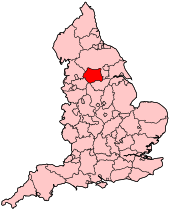Keighley (UK Parliament constituency)
Coordinates: 53°53′46″N 1°50′17″W / 53.896°N 1.838°W
| Keighley | |
|---|---|
|
County constituency for the House of Commons | |
|
Boundary of Keighley in West Yorkshire. | |
|
Location of West Yorkshire within England. | |
| County | West Yorkshire |
| Electorate | 66,967 (December 2010)[1] |
| Major settlements | Keighley, Ilkley |
| Current constituency | |
| Created | 1885 |
| Member of parliament | Kris Hopkins (Conservative) |
| Number of members | One |
| Created from | Northern West Riding of Yorkshire |
| Overlaps | |
| European Parliament constituency | Yorkshire and the Humber |
Keighley ![]() i/ˈkiːθli/ is a constituency in West Yorkshire[n 1] represented in the House of Commons of the UK Parliament[n 2] since 2010 by Kris Hopkins of the Conservative Party.
i/ˈkiːθli/ is a constituency in West Yorkshire[n 1] represented in the House of Commons of the UK Parliament[n 2] since 2010 by Kris Hopkins of the Conservative Party.
Boundaries
1885-1918: The Redistribution of Seats Act 1885 provided that the constituency was to consist of the civil parishes in the Wapentake of Staincliffe and Ewecross of Cowling, Glusburn, Keighley, Steeton with Eastburn, and Sutton; and the parishes of Haworth, Thornton, and Wilsden.
1918-1950: The Municipal Borough of Keighley, the Urban Districts of Denholme, Haworth, Oakworth, Oxenhope, and Silsden, and the Rural District of Keighley.
1950-1983: The Municipal Borough of Keighley, the Urban Districts of Denholme and Silsden, and in the Rural District of Skipton the civil parishes of Steeton with Eastburn, and Sutton.
1983-2010: The City of Bradford wards of Craven, Ilkley, Keighley North, Keighley South, Keighley West, and Worth Valley.
2010-present: The City of Bradford wards of Craven, Ilkley, Keighley Central, Keighley East, Keighley West, and Worth Valley.
Unlike many constituencies, Keighley was unaffected by the boundary changes for the 2010 general election; indeed its boundaries have remained unchanged since the 1983 redistribution.
Constituency profile
This constituency covers the town and outskirts of Keighley in West Yorkshire. It comprises the Labour area of Keighley itself, the Conservative spa town of Ilkley, and the rural areas of Craven and Worth Valley which are also Conservative. The seat has a large minority with Asian heritage, especially from Pakistan and Bangladesh.[2]
Members of Parliament
Since the 1950s, Keighley has been a marginal seat between Labour and the Conservatives. The MP from 1997 was Labour's Ann Cryer, widow of Bob Cryer who was MP for the same seat from 1974-1983 (and then for Bradford South, 1987–1994). She retired at the 2010 general election.
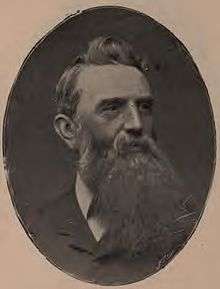
Elections
Elections in the 2010s
| Party | Candidate | Votes | % | ± | |
|---|---|---|---|---|---|
| Conservative | Kris Hopkins | 21,766 | 44.3 | +2.4 | |
| Labour | John Grogan | 18,713 | 38.1 | +2.3 | |
| UKIP | Paul Latham | 5,662 | 11.5 | +8.4 | |
| Green | Ros Brown | 1,661 | 3.4 | N/A | |
| Liberal Democrat | Gareth Epps | 1,321 | 2.7 | −12.1 | |
| Majority | 3,053 | 6.2 | |||
| Turnout | 49,123 | 71.3 | -1.1 | ||
| Conservative hold | Swing | 0.0 | |||
| Party | Candidate | Votes | % | ± | |
|---|---|---|---|---|---|
| Conservative | Kris Hopkins | 20,003 | 41.9 | +7.7 | |
| Labour | Jane Thomas | 17,063 | 35.8 | −9.0 | |
| Liberal Democrat | Nader Fekri | 7,059 | 14.8 | +3.0 | |
| BNP | Andrew Brons | 1,962 | 4.1 | −5.1 | |
| UKIP | Paul Latham | 1,470 | 3.1 | N/A | |
| National Front | Steven Smith | 135 | 0.3 | N/A | |
| Majority | 2,940 | 6.2 | |||
| Turnout | 47,962 | 72.4 | +3.2 | ||
| Conservative gain from Labour | Swing | +8.3 | |||
Elections in the 2000s
| Party | Candidate | Votes | % | ± | |
|---|---|---|---|---|---|
| Labour | Ann Cryer | 20,720 | 44.7 | −3.5 | |
| Conservative | Karl Poulsen | 15,868 | 34.3 | −4.7 | |
| Liberal Democrat | Nader Fekri | 5,484 | 11.8 | +0.9 | |
| BNP | Nick Griffin | 4,240 | 9.2 | N/A | |
| Majority | 4,852 | 10.5 | |||
| Turnout | 46,312 | 67.9 | +4.5 | ||
| Labour hold | Swing | +0.6 | |||
| Party | Candidate | Votes | % | ± | |
|---|---|---|---|---|---|
| Labour | Ann Cryer | 20,888 | 48.2 | −2.4 | |
| Conservative | Simon Cooke | 16,883 | 39.0 | +2.2 | |
| Liberal Democrat | Mike Doyle | 4,722 | 10.9 | +1.1 | |
| UKIP | Michael Cassidy | 840 | 1.9 | N/A | |
| Majority | 4,005 | 9.2 | |||
| Turnout | 43,333 | 63.4 | −13.2 | ||
| Labour hold | Swing | −2.3 | |||
Elections in the 1990s
| Party | Candidate | Votes | % | ± | |
|---|---|---|---|---|---|
| Labour | Ann Cryer | 26,039 | 50.6 | +10.2 | |
| Conservative | Gary Waller | 18,907 | 36.7 | −10.7 | |
| Liberal Democrat | Mike Doyle | 5,064 | 9.8 | −0.8 | |
| Majority | 7,132 | 13.8 | |||
| Turnout | 50,010 | 76.6 | |||
| Labour gain from Conservative | Swing | +10.2 | |||
| Party | Candidate | Votes | % | ± | |
|---|---|---|---|---|---|
| Conservative | Gary Waller | 25,983 | 47.4 | +1.7 | |
| Labour | Tommy B. Flanagan | 22,387 | 40.8 | +5.8 | |
| Liberal Democrat | Ian N. Simpson | 5,793 | 10.6 | −8.7 | |
| Green | Mike Crowson | 642 | 1.2 | +1.2 | |
| Majority | 3,596 | 6.6 | −4.2 | ||
| Turnout | 54,805 | 82.6 | +3.2 | ||
| Conservative hold | Swing | −2.1 | |||
Elections in the 1980s
| Party | Candidate | Votes | % | ± | |
|---|---|---|---|---|---|
| Conservative | Gary Waller | 23,903 | 45.76 | ||
| Labour | Alan Rye | 18,297 | 35.02 | ||
| Liberal | John Henry Wells | 10,041 | 19.22 | ||
| Majority | 5,606 | 10.73 | |||
| Turnout | 52,243 | 79.36 | |||
| Conservative hold | Swing | ||||
| Party | Candidate | Votes | % | ± | |
|---|---|---|---|---|---|
| Conservative | Gary Waller | 21,370 | 42.6 | ||
| Labour | Bob Cryer | 18,596 | 37.0 | ||
| Liberal | John Henry Wells | 9,951 | 19.82 | ||
| Ecology | M. Penney | 302 | 0.60 | ||
| Majority | 2,774 | 5.52 | |||
| Turnout | 50,216 | 78.86 | |||
| Conservative gain from Labour | Swing | ||||
Elections in the 1970s
| Party | Candidate | Votes | % | ± | |
|---|---|---|---|---|---|
| Labour | Bob Cryer | 19,698 | 44.95 | ||
| Conservative | G. Dawson | 19,620 | 44.77 | ||
| Liberal | Margaretta Holmstedt | 4,062 | 9.27 | ||
| National Front | R. L. Fairey | 234 | 0.53 | ||
| Ecology | J. Wade | 208 | 0.47 | ||
| Majority | 78 | 0.18 | |||
| Turnout | 43,819 | 80.51 | |||
| Labour hold | Swing | ||||
| Party | Candidate | Votes | % | ± | |
|---|---|---|---|---|---|
| Labour | Bob Cryer | 19,569 | 45.58 | ||
| Conservative | Cyril Taylor | 16,488 | 38.40 | ||
| Liberal | Margaretta Holmstedt | 5,839 | 13.60 | ||
| National Front | G. Wright | 859 | 2.00 | ||
| More Prosperous Britain | C. W. Deakin | 179 | 0.42 | ||
| Majority | 3,081 | 7.18 | |||
| Turnout | 42,935 | 82.98 | |||
| Labour hold | Swing | ||||
| Party | Candidate | Votes | % | ± | |
|---|---|---|---|---|---|
| Labour | Bob Cryer | 18,595 | 41.81 | ||
| Conservative | Joan Valerie Hall | 17,717 | 39.83 | ||
| Liberal | W.K Whittaker | 7,820 | 17.58 | ||
| Independent | John Binns | 348 | 0.78 | ||
| Majority | 878 | 1.97 | |||
| Turnout | 44,480 | 86.79 | |||
| Labour gain from Conservative | Swing | ||||
| Party | Candidate | Votes | % | ± | |
|---|---|---|---|---|---|
| Conservative | Joan Valerie Hall | 20,957 | 50.75 | ||
| Labour | John Binns | 20,341 | 49.25 | ||
| Majority | 616 | 1.49 | |||
| Turnout | 41,298 | 80.66 | |||
| Conservative gain from Labour | Swing | ||||
Elections in the 1960s
| Party | Candidate | Votes | % | ± | |
|---|---|---|---|---|---|
| Labour | John Binns | 22,039 | 55.01 | ||
| Conservative | John George Bellak | 18,027 | 44.99 | ||
| Majority | 4,012 | 10.01 | |||
| Turnout | 40,066 | 83.46 | |||
| Labour hold | Swing | ||||
| Party | Candidate | Votes | % | ± | |
|---|---|---|---|---|---|
| Labour | John Binns | 17,816 | 42.97 | ||
| Conservative | William Marcus John Worsley | 15,115 | 36.46 | ||
| Liberal | William E. Jones | 8,529 | 20.57 | ||
| Majority | 2,701 | 6.51 | |||
| Turnout | 30,874 | 61.32 | |||
| Labour gain from Conservative | Swing | ||||
Elections in the 1950s
| Party | Candidate | Votes | % | ± | |
|---|---|---|---|---|---|
| Conservative | William Marcus John Worsley | 20,626 | 50.21 | ||
| Labour | Charles Rider Hobson | 20,456 | 49.79 | ||
| Majority | 170 | 0.41 | |||
| Turnout | 41,082 | 85.62 | |||
| Conservative gain from Labour | Swing | ||||
| Party | Candidate | Votes | % | ± | |
|---|---|---|---|---|---|
| Labour | Charles Rider Hobson | 19,414 | 46.52 | ||
| Conservative | William Marcus John Worsley | 16,011 | 38.36 | ||
| Liberal | Ashley Mitchell | 6,310 | 15.12 | ||
| Majority | 3,403 | 8.15 | |||
| Turnout | 41,735 | 83.89 | |||
| Labour hold | Swing | ||||
| Party | Candidate | Votes | % | ± | |
|---|---|---|---|---|---|
| Labour | Charles Rider Hobson | 23,743 | 52.72 | ||
| Conservative | Kenneth Hargreaves | 21,295 | 47.28 | ||
| Majority | 2,448 | 5.44 | |||
| Turnout | 87.51 | ||||
| Labour hold | Swing | ||||
| Party | Candidate | Votes | % | ± | |
|---|---|---|---|---|---|
| Labour | Charles Rider Hobson | 21,833 | 48.47 | ||
| Conservative | Kenneth Hargreaves | 16,252 | 36.08 | ||
| Liberal | John G Walker | 6,962 | 15.45 | ||
| Majority | 5,581 | 12.39 | |||
| Turnout | 88.13 | ||||
| Labour hold | Swing | ||||
Elections in the 1940s
| Party | Candidate | Votes | % | ± | |
|---|---|---|---|---|---|
| Labour | Ivor Thomas | 22,222 | 52.7 | ||
| Conservative | Wing-Com. Henry Arthur Dalrymple-White | 10,865 | 25.7 | ||
| Liberal | Norman Robson | 9,116 | 21.6 | ||
| Majority | 11,357 | 26.9 | |||
| Turnout | 82.3 | ||||
| Labour hold | Swing | ||||
| Party | Candidate | Votes | % | ± | |
|---|---|---|---|---|---|
| Labour | Ivor Thomas | unopposed | n/a | n/a | |
| Labour hold | Swing | n/a | |||
General Election 1939/40:
Another general election was required to take place before the end of 1940. The political parties had been making preparations for an election to take place from 1939 and by the end of this year, the following candidates had been selected;
- Labour: Hastings Lees-Smith
- Conservative: Gay Burdett [16]
Elections in the 1930s
| Party | Candidate | Votes | % | ± | |
|---|---|---|---|---|---|
| Labour | Rt Hon. Hastings Bertrand Lees-Smith | 20,124 | 50.5 | ||
| Conservative | George Steven Harvie-Watt | 19,756 | 49.5 | ||
| Majority | 368 | 0.9 | |||
| Turnout | 39,880 | 78.9 | |||
| Labour gain from Conservative | Swing | ||||
| Party | Candidate | Votes | % | ± | |
|---|---|---|---|---|---|
| Conservative | George Steven Harvie-Watt | 19,079 | 46.2 | ||
| Labour | Rt Hon. Hastings Bertrand Lees-Smith | 13,192 | 31.9 | ||
| Liberal | William John Crossland Briggs | 9,044 | 21.9 | ||
| Majority | 5,887 | 14.2 | |||
| Turnout | 41,315 | 83.9 | |||
| Conservative gain from Labour | Swing | ||||
Elections in the 1920s
| Party | Candidate | Votes | % | ± | |
|---|---|---|---|---|---|
| Labour | Hastings Bertrand Lees-Smith | 18,412 | 44.7 | -0.3 | |
| Liberal | Cllr. David Rhodes | 11,905 | 28.9 | +2.3 | |
| Unionist | Arthur Smith | 10,858 | 26.4 | -2.0 | |
| Majority | 6,507 | 15.8 | |||
| Turnout | |||||
| Labour hold | Swing | -1.3 | |||
| Party | Candidate | Votes | % | ± | |
|---|---|---|---|---|---|
| Labour | Hastings Bertrand Lees-Smith | 14,105 | 45.0 | ||
| Unionist | T P Perks | 8,922 | 28.4 | n/a | |
| Liberal | Thomas Artemus Jones | 8,339 | 26.6 | ||
| Majority | 5,183 | 16.5 | |||
| Turnout | 31,366 | ||||
| Labour gain from Liberal | Swing | ||||
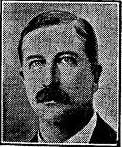
| Party | Candidate | Votes | % | ± | |
|---|---|---|---|---|---|
| Liberal | Robert Rivington Pilkington | 14,609 | 50.9 | + | |
| Labour | Hastings Bertrand Lees-Smith | 14,083 | 49.1 | - | |
| Majority | 526 | 1.8 | |||
| Turnout | 28,692 | ||||
| Liberal gain from Labour | Swing | + | |||
| Party | Candidate | Votes | % | ± | |
|---|---|---|---|---|---|
| Labour | Hastings Bertrand Lees-Smith | 13,978 | |||
| Liberal | William Anderton Brigg | 9,262 | |||
| Unionist | Charles Henry Foulds | 6,955 | |||
| Majority | |||||
| Turnout | |||||
| Labour gain from Unionist | Swing | ||||
Elections in the 1910s
| Party | Candidate | Votes | % | ± | |
|---|---|---|---|---|---|
| Unionist |
|
8,820 | |||
| Liberal | William Henry Somervell | 7,709 | |||
| Labour | William Bland | 6,324 | |||
| Majority | 1,111 | ||||
| Turnout | |||||
| Unionist gain from Liberal | Swing | ||||
- endorsed by the Coalition Government
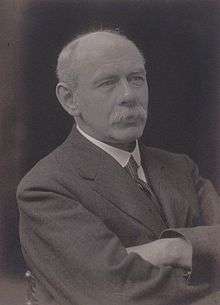
| Party | Candidate | Votes | % | ± | |
|---|---|---|---|---|---|
| Liberal | William Henry Somervell | 4,873 | 67.5 | +28.8 | |
| Ind. Labour Party | William Bland | 2,349 | 32.5 | +2.7 | |
| Majority | 2,524 | 35.0 | +27.8 | ||
| Turnout | 50.2 | -36.3 | |||
| Liberal hold | Swing | +13.0 | |||
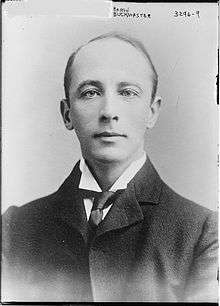
| Party | Candidate | Votes | % | ± | |
|---|---|---|---|---|---|
| Liberal | Sir Stanley Owen Buckmaster | 4,730 | 38.7 | ||
| Unionist | Viscount Lascelles | 3,852 | 31.5 | ||
| Labour | William Bland | 3,646 | 29.8 | ||
| Majority | 878 | 7.2 | |||
| Turnout | 86.5 | ||||
| Liberal hold | Swing | ||||
| Party | Candidate | Votes | % | ± | |
|---|---|---|---|---|---|
| Liberal | Stanley Owen Buckmaster | 4,667 | 39.0 | ||
| Conservative | William Mitchell Acworth | 3,842 | 32.1 | ||
| Labour | William Crawford Anderson | 3,452 | 28.9 | ||
| Majority | |||||
| Turnout | |||||
| Liberal hold | Swing | ||||
See also
Notes
- ↑ A county constituency (for the purposes of election expenses and type of returning officer)
- ↑ As with all constituencies, the constituency elects one Member of Parliament (MP) by the first past the post system of election at least every five years.
References
- ↑ "Electorate Figures - Boundary Commission for England". 2011 Electorate Figures. Boundary Commission for England. 4 March 2011. Retrieved 13 March 2011.
- ↑ "Check Browser Settings". statistics.gov.uk.
- ↑ Leigh Rayment's Historical List of MPs – Constituencies beginning with "K" (part 1)
- ↑ "Election Data 2015". Electoral Calculus. Archived from the original on 17 October 2015. Retrieved 17 October 2015.
- ↑ "Keighley". BBC News. Retrieved 13 May 2015.
- ↑ "Election Data 2010". Electoral Calculus. Archived from the original on 26 July 2013. Retrieved 17 October 2015.
- ↑ http://www.bradford.gov.uk/NR/rdonlyres/C17655F5-5B9D-407A-8673-C987F20B7183/0/KeighleyStatementofPersonsNominated.pdf
- ↑ "UK > England > Yorkshire & the Humber > Keithley". Election 2010. BBC. 7 May 2010. Retrieved 10 May 2010.
- ↑ "Election Data 2005". Electoral Calculus. Archived from the original on 15 October 2011. Retrieved 18 October 2015.
- ↑ "Election Data 2001". Electoral Calculus. Archived from the original on 15 October 2011. Retrieved 18 October 2015.
- ↑ "Election Data 1997". Electoral Calculus. Archived from the original on 15 October 2011. Retrieved 18 October 2015.
- ↑ "Election Data 1992". Electoral Calculus. Archived from the original on 15 October 2011. Retrieved 18 October 2015.
- ↑ "Politics Resources". Election 1992. Politics Resources. 9 April 1992. Retrieved 6 December 2010.
- ↑ "Election Data 1987". Electoral Calculus. Archived from the original on 15 October 2011. Retrieved 18 October 2015.
- ↑ "Election Data 1983". Electoral Calculus. Archived from the original on 15 October 2011. Retrieved 18 October 2015.
- ↑ Yorkshire Post and Leeds Intelligencer 24 August 1939
- Craig, F. W. S. (1983). British parliamentary election results 1918-1949 (3 ed.). Chichester: Parliamentary Research Services. ISBN 0-900178-06-X.

